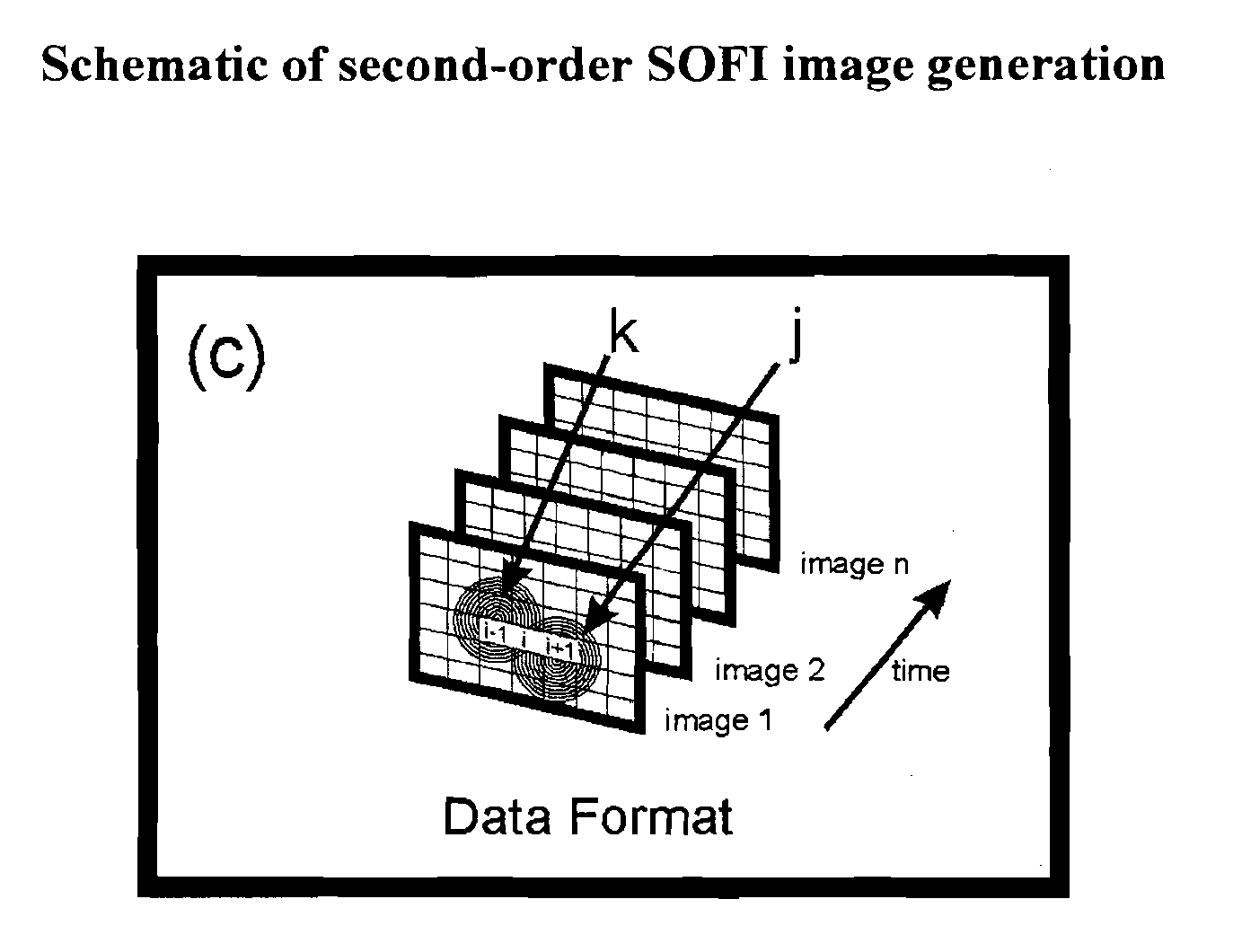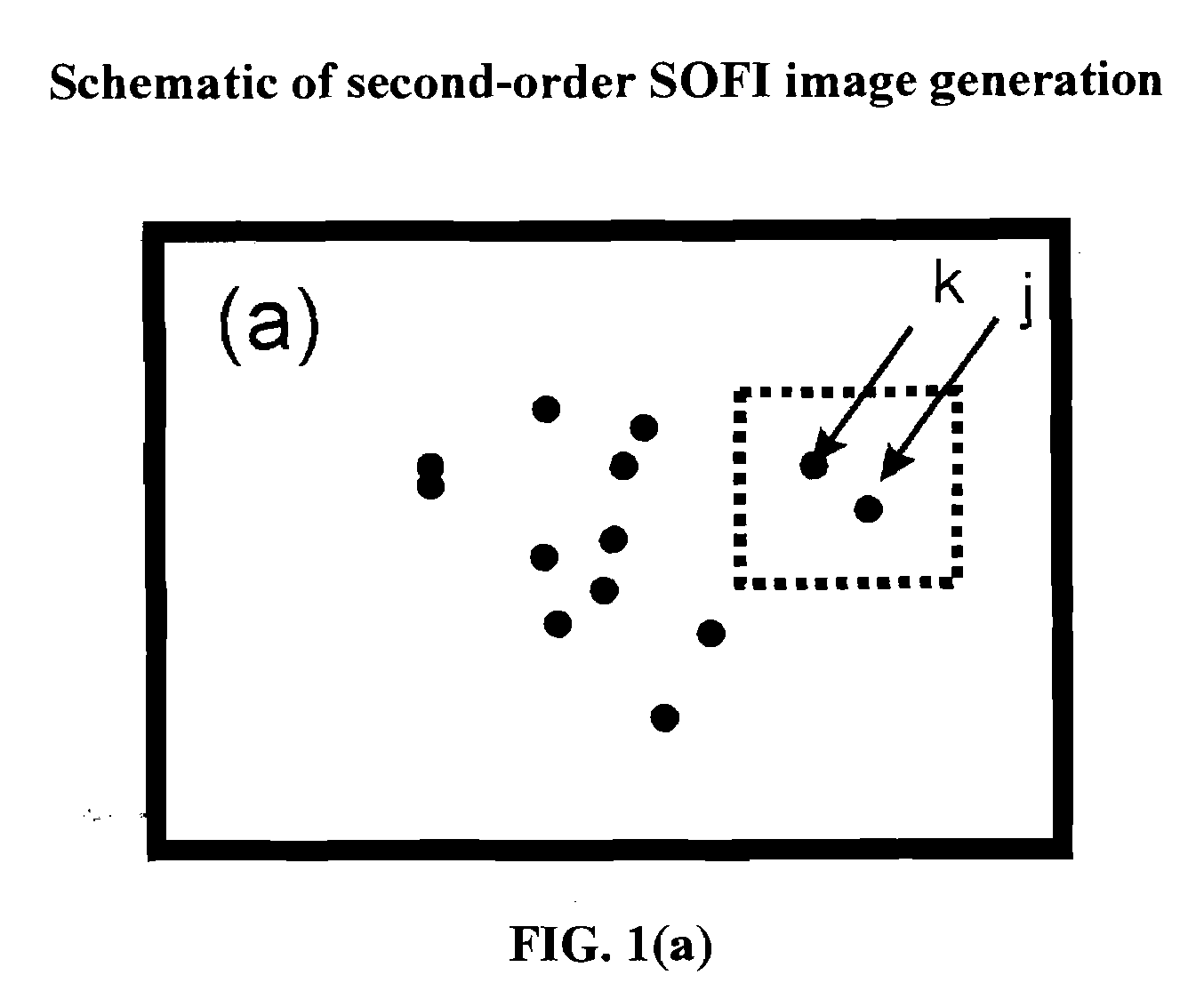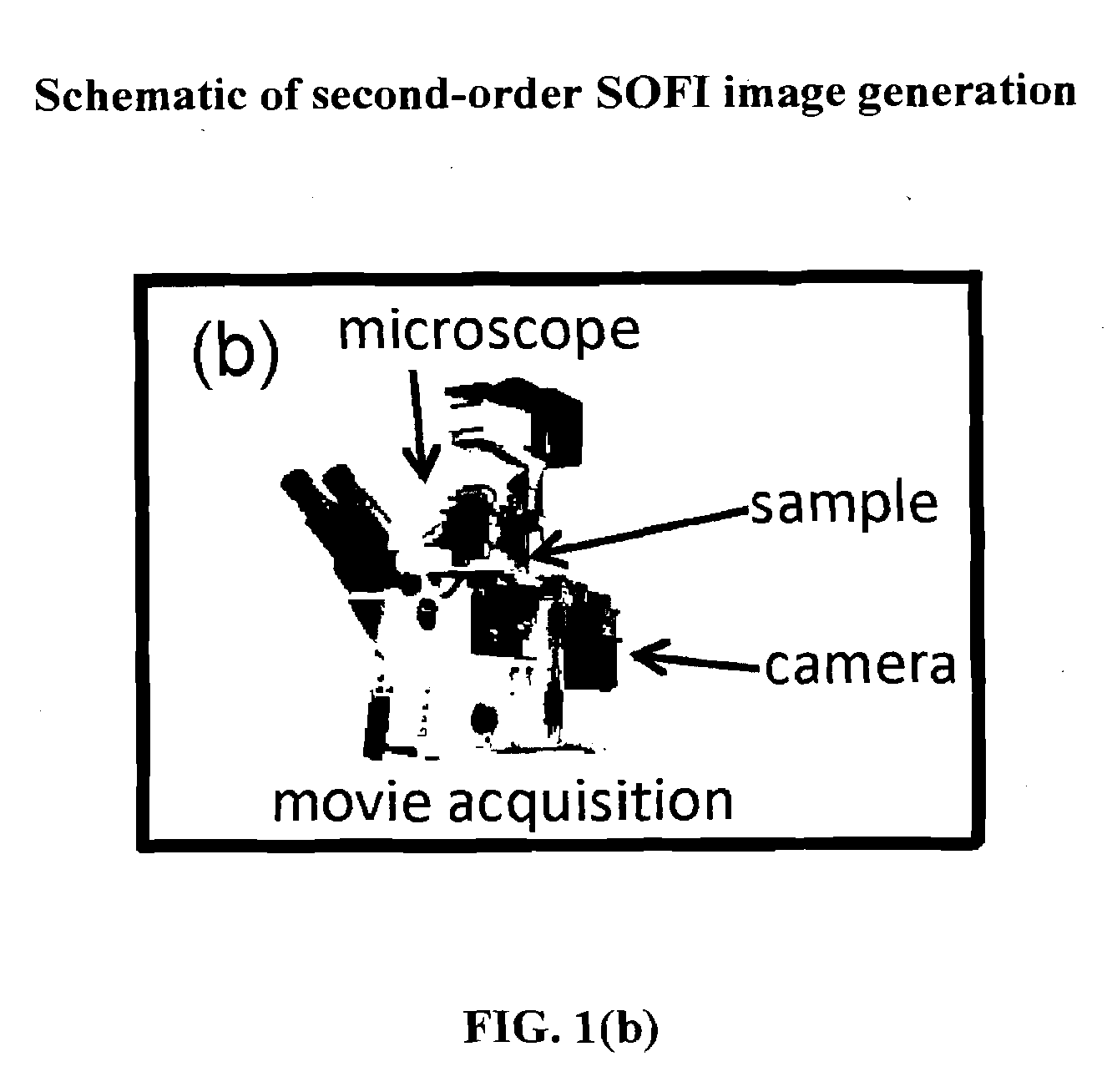Superresolution Optical Fluctuation Imaging (SOFI)
- Summary
- Abstract
- Description
- Claims
- Application Information
AI Technical Summary
Benefits of technology
Problems solved by technology
Method used
Image
Examples
example 1
der Auto-Correlation-Based Sofi With
Arbitrary Time Lags
[0036]The second-order auto-correlation function G2 (ri, τ1, τ2) for arbitrary time lags τ1 is given by:
[0037]G2(ri, τ1, τ2)=δF(ri, t+τ1)·δF(ri, t+τ2)(4)
[0038]A SOFI image can be generated by using the second-order auto-correlation function not only for time lag τ1=0 and τ2 =1 as described in paragraph [0028], but for any combination of time lags τ1, τ2 (FIG. 3(b)). A superposition of many such combinations will also yield a SOFI image (Eq. (5) and FIG. 3(c)):
S(ri)=∑τ1,τ2G2(ri,τ1,τ2)(5)
[0039]Note that τj could take finite time lags values or differences between time lags.
example 2
der Auto-Cumulant-Based Sofi
[0040]The above descriptions of the preferred embodiment and Example 1 (paragraphs [0025]-[0032]) utilize second-order auto-correlations. Higher-order SOFI images could be generated by utilizing the concept of auto-cumulants. Auto-cumulants can be derived from the auto-correlation functions and are identical to them for orders 1, 2 and 3 (the first-order correlation corresponds to the temporal mean value). Higher-order auto-correlation functions (for pixel ri) are computed according to:
[0041]Gn(ri, τ1, . . . , τn)=δF(ri,t+τ2) . . . δF(ri,t+τn)(6) utilizing auto-cumulants (J. Mendel,“Tutorial on Higher-Order Statistics (Spectra) in Signal Processing and System Theory: Theoretical Results and Some Applications”,1991, Proceedings of IEEE, vol. 19, no. 3, Equation A-1), Gn, (ri,τ1, . . . , tn) could be computed according to Eqs. (7) below that describe the relationship between auto-cumulants Cn and auto-correlations Gn (only relationships up to 4th order are ...
example 3
der Cross-Correlation-Based Sofi
[0045]Analogous to the second-order auto-correlation SOFI scheme (paragraphs [0025]-[0031]), one can define a spatio-temporal second-order cross-correlations-based SOFI approach. In this case, different pixels' ri1 and ri2 time trajectories are correlated at time lags τ1=0 and τ2=1. The second-order cross-correlation XG2 is then given by (see FIG. 4(a)):
[0046]XG2(ri1,ri2|0,1)=δF(ri1,t+0)·δF(ri2,t+1), (10) Whenever the original PSF is oversampled by several pixels, and those pixels record fluctuations from near-by emitters in a correlated manner, a cross-correlation could be calculated. Although time trajectories of different pixels are used to calculate the cross-correlation terms, the value of XG2 could be assigned to a particular SOFI image's pixel according to:
XG2(ri1,ri2|0,1)=U(ri1-ri22)·∑kU2(rk-ri1+ri22)·ɛk2〈δsk(t+0)·δsk(t+1)〉t(11)
[0047]where k extends over all emitters present in the field-of-view / sample and rk represents emitter k's positions. ...
PUM
 Login to View More
Login to View More Abstract
Description
Claims
Application Information
 Login to View More
Login to View More - R&D
- Intellectual Property
- Life Sciences
- Materials
- Tech Scout
- Unparalleled Data Quality
- Higher Quality Content
- 60% Fewer Hallucinations
Browse by: Latest US Patents, China's latest patents, Technical Efficacy Thesaurus, Application Domain, Technology Topic, Popular Technical Reports.
© 2025 PatSnap. All rights reserved.Legal|Privacy policy|Modern Slavery Act Transparency Statement|Sitemap|About US| Contact US: help@patsnap.com



